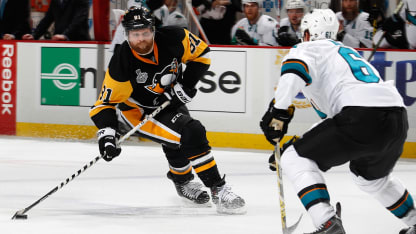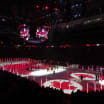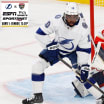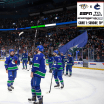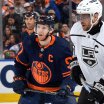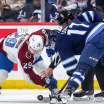Unusually high shot totals sometimes can be the consequence of generous scorekeepers, but that's not happening in this case, either.
Not all goaltender saves are counted as shots. If, in the scorekeeper's judgment, the puck would have missed the net, then it is marked as a missed shot instead of a shot on goal. In some cases, the scorekeeper is more likely to give the benefit of the doubt and count more saves as shots on goal.
This phenomenon is called scorekeeper bias, but it isn't responsible for Pittsburgh's high shot totals. According to a
recent academic paper
by Michael Schuckers and Brian Macdonald, the latter now the director of analytics for the Florida Panthers, this only significantly impacts the way shots are recorded in Florida's BB&T Center and Scotttrade Center in St. Louis.
QUANTITY VS. QUALITY
There is another route to success. The Sharks have averaged 27.6 shots per game, which ranks 12th among the 16 playoff teams, but have scored on a League-leading 12 percent of their shots. That's why they lead the NHL with 3.30 goals per game, compared to 3.15 for the Penguins, who are in second place. Is this year's Stanley Cup Final a showdown between shot quantity and quality?
Answering that question requires a good way of measuring shot quality. Unfortunately, there's no way of knowing which shots were screened based on the data being recorded, for example, nor is there any way to be certain how many shots were taken off the rush, from a cross-ice pass, or a rebound.
The location from which shots were taken is recorded, but there's not much of a difference from team to team. In fact, Pittsburgh's average shots are taken from a distance of 33.3 feet from the net, closer than San Jose's average shots (34.0), and ranks third-closest in the League behind the Dallas Stars (32.5) and Blackhawks (33.0).
